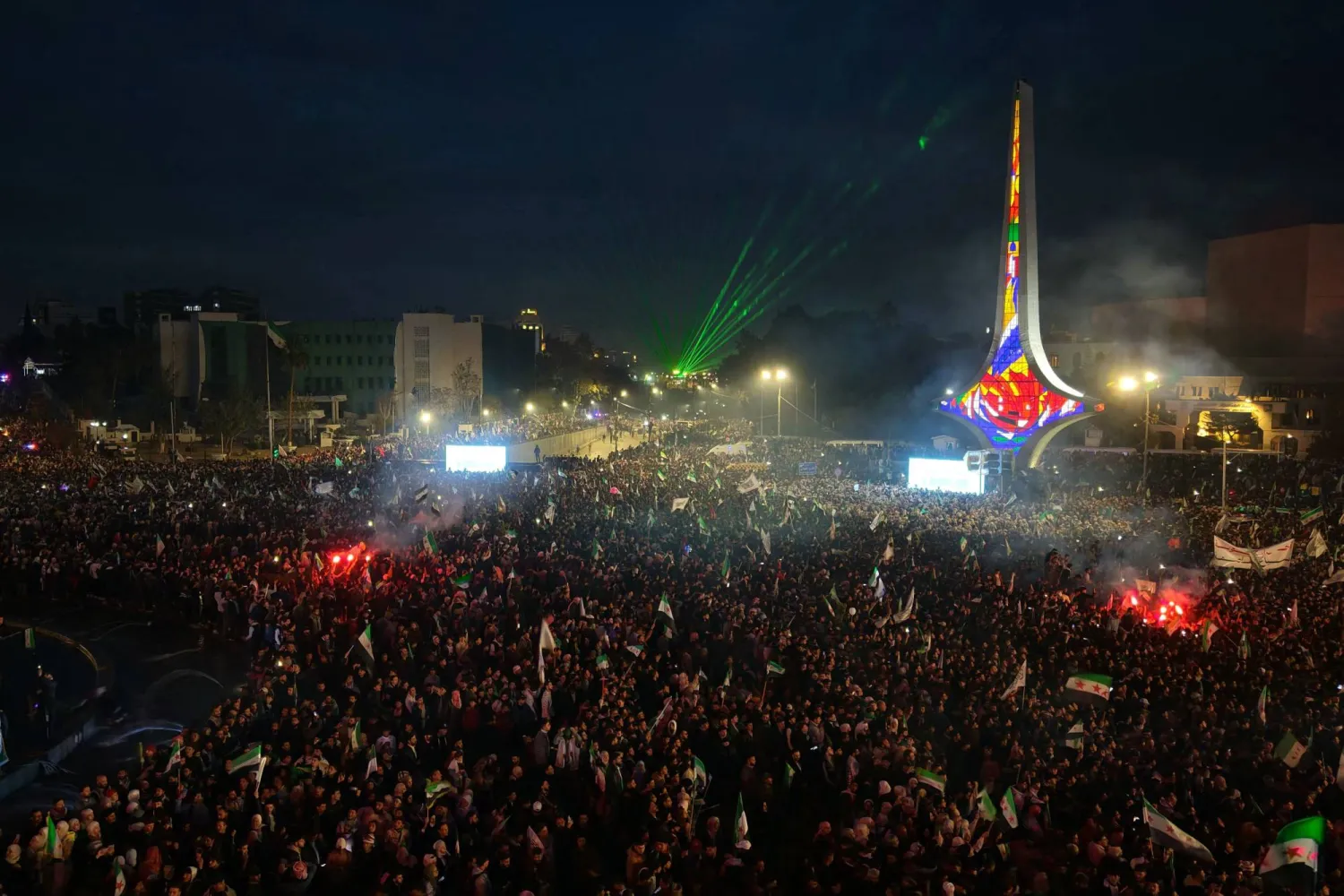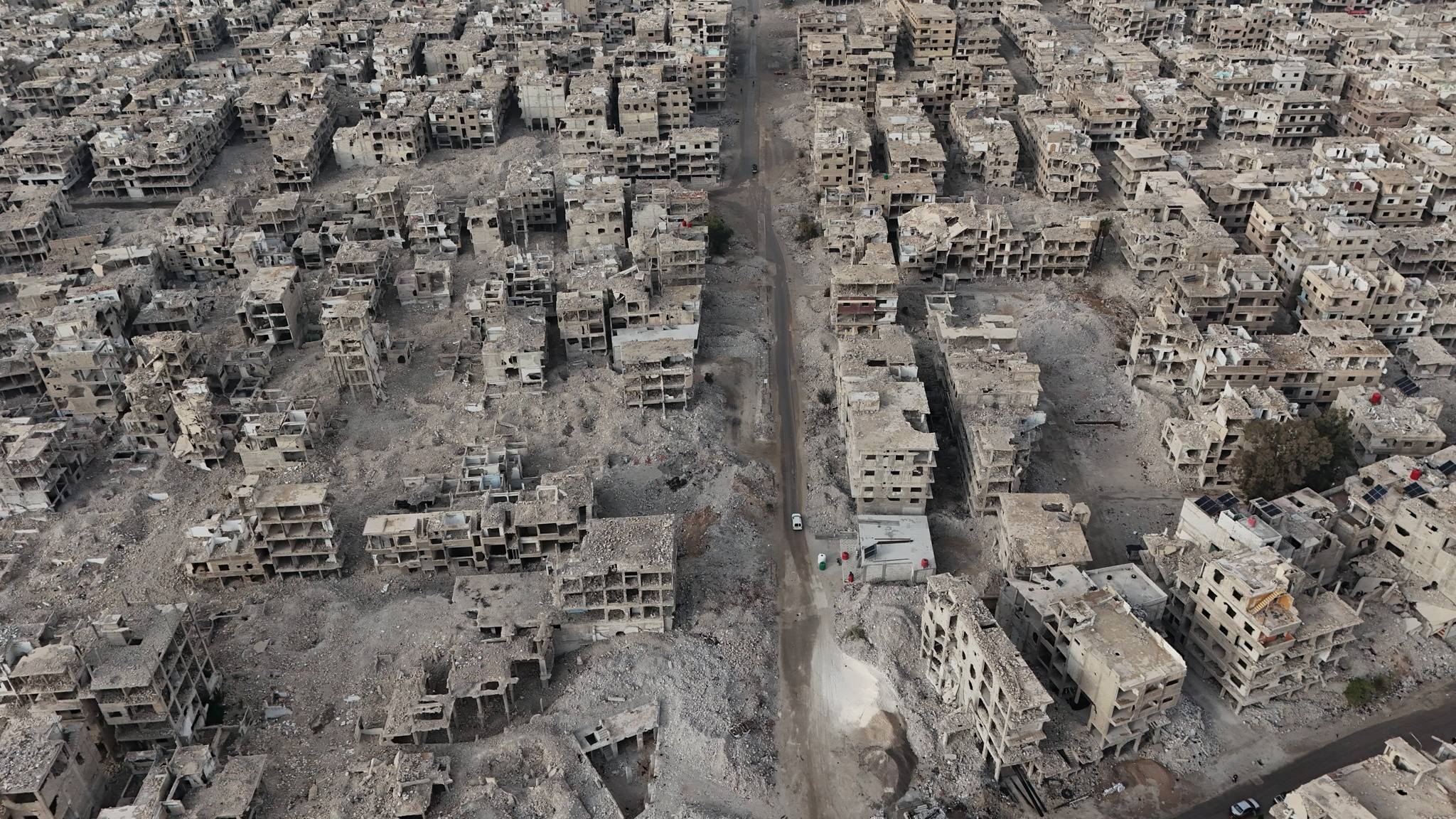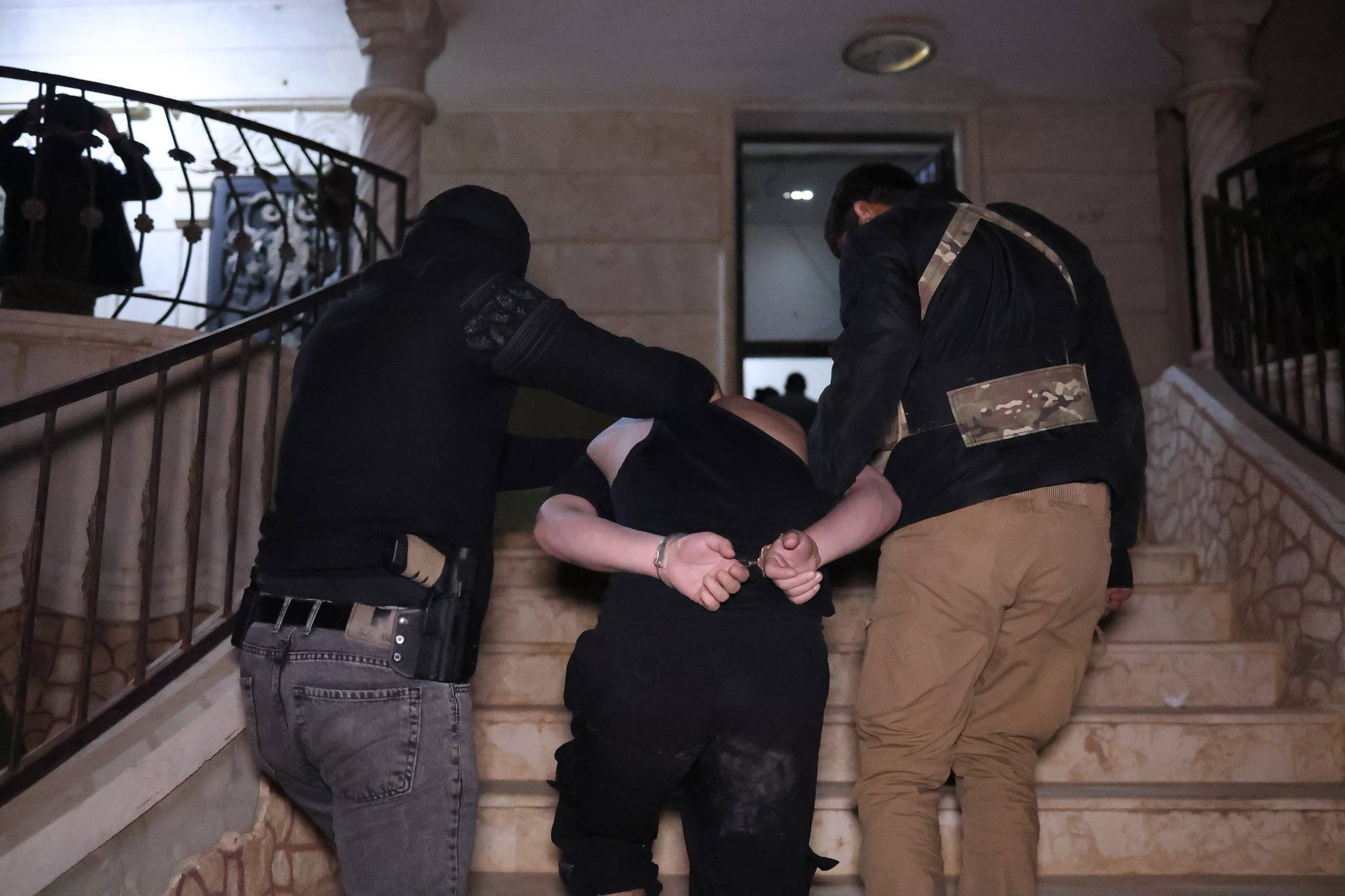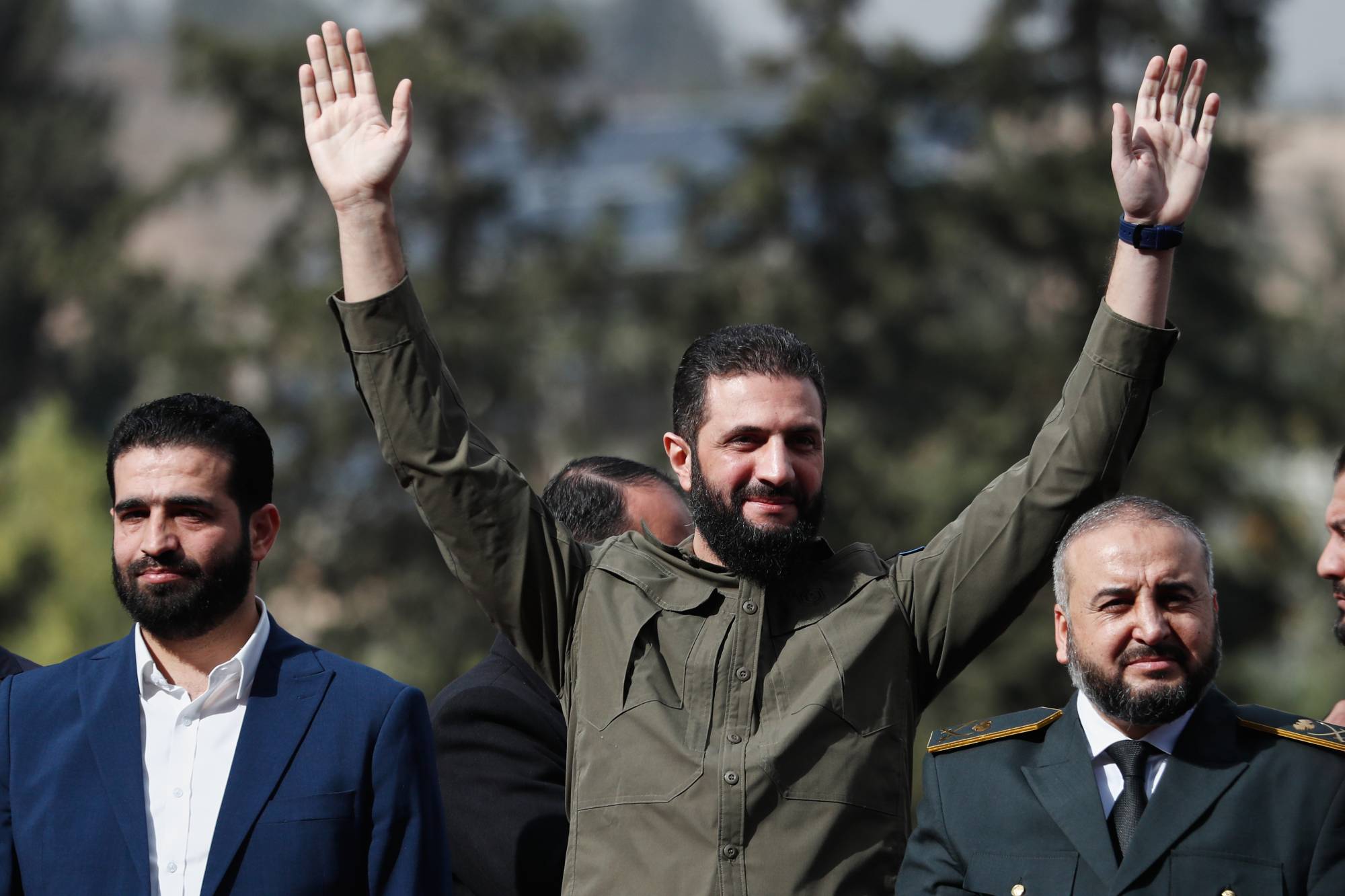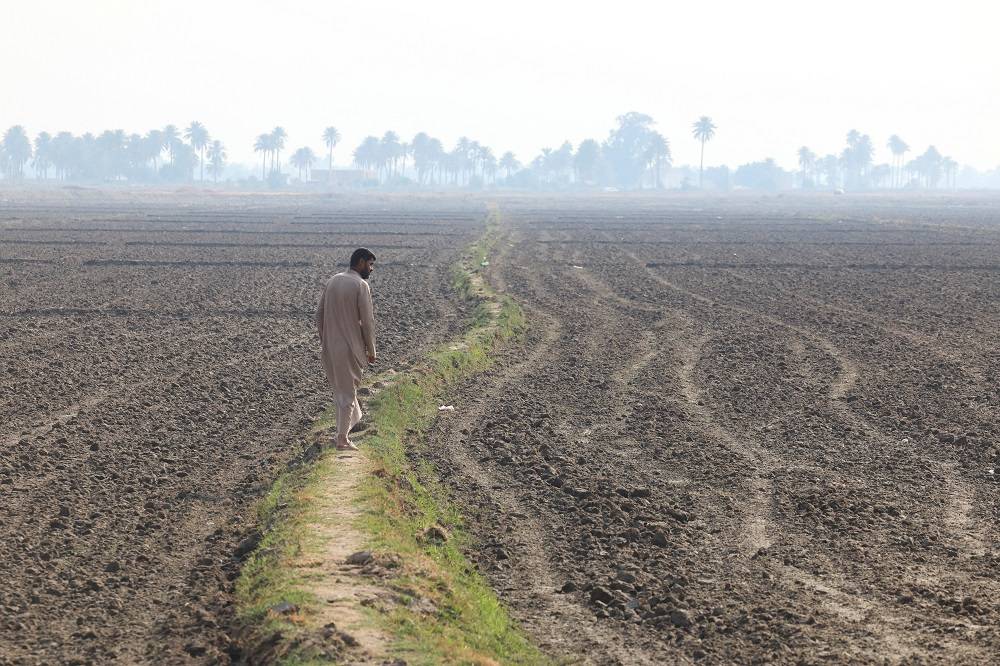Since the Syrian revolution transitioned into armed conflict—after the regime ruled out negotiations and used excessive force to suppress protests in 2011—the country witnessed a surge in armed factions. These ranged from jihadist Islamist groups to more moderate ones, differing in their levels of extremism and religiosity.
In late 2011, one of the largest factions, Harakat Ahrar al-Sham, was established, blending jihadist and Muslim Brotherhood ideologies with a local agenda. Ahrar al-Sham was the first faction to merge global jihadist thought with local objectives, even preceding Hay’at Tahrir al-Sham (HTS) in this approach. HTS, originally affiliated with al-Qaeda, upheld global jihadism until its formal split from the organization in July 2016.
Throughout its various transformations and ascents—culminating in the “Deter the Aggression” battle that propelled HTS and its leader Abu Mohammad al-Jolani (Ahmad al-Sharaa’) to power in Syria—the group maintained a precise internal structure, resembling a military academy, as described by a former HTS leader who spoke to Asharq Al-Awsat.
Ahrar al-Sham: The First Hybrid Jihadist Faction
At its peak, Ahrar al-Sham was among Syria’s most ideologically driven and organized factions. Its leaders, such as Hassan Abboud and Abu Yazan al-Shami, held strong charisma and influence within the revolutionary circles, alongside figures like Abdul Qadir al-Saleh, the leader of Liwa al-Tawhid.
This dominance continued until September 9, 2014, when a mysterious explosion targeted Ahrar al-Sham’s Shura Council meeting in Idlib’s Ram Hamdan, killing its leader Abu Abdullah al-Hamawi (Hassan Abboud) and nearly 40 other senior figures. This incident marked the beginning of the faction’s decline. Within a short period, Ahrar al-Sham shrank into a minor faction, fragmented between larger groups such as the Syrian National Army (SNA) and HTS.
The Syrian National Army (SNA) itself was formed on December 30, 2017, comprising 36 armed factions, including the Sham Front, Jaysh al-Islam, Faylaq al-Majd, and Sultan Shah Division, which was predominantly Turkmen.
Liwa al-Tawhid: A Brief Yet Powerful Force
Another major faction that enjoyed significant strength and popularity—more than Jabhat al-Nusra (HTS’s predecessor) at one point—was Liwa al-Tawhid, established on July 21, 2012. This group brought together various local battalions primarily operating in northern Aleppo’s countryside.
At its height, Liwa al-Tawhid was the largest opposition formation, embodying a “moderate Islamist” trend that blended Salafism, the Muslim Brotherhood’s ideology, and nationalist rhetoric. It was one of the few factions that initially attracted a diverse spectrum of fighters, from moderate jihadists to nationalists.
The group fought on multiple fronts, including a notable battle against Hezbollah in Qusayr (2013). However, after its leader Abdul Qadir al-Saleh was killed in an airstrike on November 18, 2013, Liwa al-Tawhid quickly disintegrated, with its members dispersing among various factions based on their ideological leanings.
Jaysh al-Islam: A dominant power in Damascus’ suburbs among the most prominent factions that played a key role in the war was Jaysh al-Islam, headquartered in Douma (Eastern Ghouta, Damascus countryside). The group established control over most opposition-held areas surrounding Damascus, including Eastern Ghouta, Qalamoun, and even neighborhoods inside the capital such as Qaboun, Barzeh, and Jobar—reaching as far as Abbasid Square, one of Damascus’ key landmarks.
Jaysh al-Islam was a declared Salafi-jihadist group, which, by 2013, had amassed over 25,000 fighters. It possessed medium and heavy weaponry, including tanks, armored vehicles, and short- to mid-range missiles—as showcased in its 2015 military parade, where 1,700 fighters graduated.
Despite its Salafi-jihadist ideology, Jaysh al-Islam engaged in fierce battles against Jabhat al-Nusra (HTS’s predecessor), Faylaq al-Rahman (an ally of Nusra), and even ISIS. These internal conflicts weakened the group, yet it maintained cohesion until its leader, Zahran Alloush, was assassinated in a suspected Russian airstrike on December 26, 2015.
Like many other factions that collapsed after losing their leaders, Jaysh al-Islam failed to maintain its influence, despite receiving external support. It ultimately lost its territories, especially compared to HTS, which proved more resilient.
How HTS Survived Where Others Failed
Many factions, including Ahrar al-Sham, Jaysh al-Islam, and Liwa al-Tawhid, once outnumbered HTS (then Jabhat al-Nusra) and enjoyed greater material, media, and popular support. However, Nusra was designated a terrorist organization early on, leading to its international isolation. While this seemed like a disadvantage, it allowed HTS to consolidate power away from external interference.
Over time, as other factions splintered due to leadership losses, internal strife, and external pressure, HTS remained intact, strategically evolving. This resilience and adaptability—under Abu Mohammad al-Jolani’s leadership—ultimately positioned HTS as the dominant force, culminating in its rise to power in Syria’s new political landscape.
While most leaders of the armed opposition factions—such as Ahrar al-Sham, Jaysh al-Islam, and Liwa al-Tawhid—were preoccupied with competing for power in areas outside the control of Bashar al-Assad’s forces, Abu Mohammad al-Jolani (Ahmad al-Sharaa’) operated quietly and behind the scenes. He remained out of the public eye until 2016, when he announced his split from al-Qaeda, after which he once again withdrew from the spotlight.
Hay’at Tahrir al-Sham (HTS), formerly known as Jabhat al-Nusra, was formed through both voluntary and forced alliances among several militant factions, including Jabhat Ansar al-Din, Nour al-Din al-Zenki Movement, Jaysh al-Sunna, and Liwa al-Haqq. It also absorbed a wide range of smaller al-Qaeda-linked factions, such as the Caucasus Emirate, the Turkistan Islamic Party, Jaysh al-Izza, and Jaysh al-Nasr. Like other militant groups, HTS underwent major transformations, splits, and internal shifts. However, what set it apart was its ability to adapt ideologically in response to local, regional, and international realities.
Unlike other factions that were forced into mergers for survival—such as Ahrar al-Sham, which combined with Nour al-Din al-Zenki under the name “Syrian Liberation Front”—HTS managed to maintain its organizational independence. In fact, rather than dissolving into other groups, it continued to absorb smaller al-Qaeda-affiliated factions, including Jabhat Ansar al-Din and Jaysh al-Nasr. As time passed, HTS grew stronger. By early 2019, after intense battles against Ahrar al-Sham, Nour al-Din al-Zenki, and other factions, it secured full control over Idlib Province, along with large parts of Aleppo, Hama, and Latakia.
Sami Mohammad, a former religious and military leader within HTS, explained that the most important factor behind the group’s survival was its independent decision-making, the charisma of Ahmad al-Sharaa’ (Jolani), and the strong discipline within its ranks. He emphasized the personal trust that Jolani built with both his commanders and fighters, noting that Jolani knew all his field commanders, even the lower-ranking ones, and met with them regularly. This personal involvement strengthened his position within the organization and fostered loyalty, unlike other factions that suffered from chaos and disorganized leadership.
Mohammad described HTS as a “true military academy,” in contrast to most Syrian opposition factions, which were structured around local or tribal affiliations. HTS, he explained, had a clear organizational hierarchy and centralized decision-making, ensuring strategic consistency.
Mohammad Ibrahim, also known as Abu Yahya al-Shami, a former military commander in an Islamist faction, noted that the key to HTS’s rise was its relative independence and its ability to break established political boundaries. He explained that most armed factions were directly tied to foreign states, forcing them to adhere to external agendas, whereas HTS was not directly controlled by any state. This allowed it more freedom to act in its own interests, even if that meant eliminating rival factions. He also pointed out that HTS’s designation as a terrorist organization worked in its favor, as it prevented major countries from openly engaging with it like they did with other factions. This, in turn, gave HTS greater flexibility in its decision-making, allowing it to maneuver more effectively and eliminate competitors.
Yahya emphasized that Jolani always pursued his own faction’s interests ruthlessly, unlike other rebel groups that often compromised or sought partial solutions. He argued that while Jolani fought with extreme determination and always aimed to win, many other factions settled for half-measures.
A leaked audio recording of Hassan al-Daghim, a former moral guidance officer in the Syrian National Army, further supports this view. In the recording, Daghim states that Jolani is a pragmatic leader who will sacrifice anything or anyone to achieve power. Abu Yahya concluded that Jolani’s practical experience came from Syria itself, as he was not originally this skilled. However, his ambition, ability to capitalize on victories, and lessons learned Abu from the mistakes of both ISIS and Nusra contributed to his success.
HTS’s dominance was not only due to military strategy but was also aided by religious legitimacy. Several influential clerics and political figures played a key role in legitimizing Jolani’s rule through religious rhetoric. Among them were Zaid al-Atar (Abu Aisha), a former HTS political liaison who later became Foreign Minister under the name Asaad al-Shaibani, and Abu Ahmad Hudud (Anas Khattab), a former security chief who is now head of HTS intelligence. These figures helped consolidate Jolani’s leadership, ensuring that HTS eliminated all potential challengers, leaving only its own government—the “Salvation Government”—as the ruling authority.
Ultimately, HTS’s tactical flexibility, military discipline, and ruthless pragmatism allowed it to outlast and surpass all other opposition factions. Unlike groups that were either fragmented by infighting or constrained by foreign backers, HTS retained control over its own fate. With the fall of the previous regime, it successfully transitioned from an opposition faction to the dominant force in post-war Syria, with its leadership now firmly established in Damascus.
Victory... A Shared Triumph
Alaa al-Din Ayoub, known as “Farouq Abu Bakr,” a former commander in the Free Syrian Army who led negotiations for the withdrawal of opposition factions from Aleppo in 2016, reflected on the past conflicts with Jabhat al-Nusra—later known as Fatah al-Sham and eventually Hay’at Tahrir al-Sham (HTS). “We had our differences regarding how they dealt with the Free Syrian Army factions,” he said, “but we cannot deny that they were the most organized and well-trained among us. HTS focused on structuring its ranks and training its fighters, yet the recent victory cannot be attributed solely to them.”
Speaking to Asharq Al-Awsat, Ayoub emphasized that the success in repelling aggression resulted from multiple factors, both external and internal. International power struggles and geopolitical conflicts played a role, but so did the resilience of tens of thousands of fighters across revolutionary factions. However, he acknowledged that HTS stood out for its ability to seize opportunities better than others.
“We all remember the phase before HTS took control of Idlib and the battles it fought against other factions,” he continued. “In my opinion, the main reason it succeeded where others failed was the fragmentation of the opposition factions and their inability to present a unified, cohesive model.”
Fragmented Alliances
Regarding political formations, particularly the Syrian National Coalition—the political wing of the armed opposition that was tasked with negotiations before the fall of the regime—Ayoub pointed out that its creation was backed by Türkiye and other regional powers. As a result, most of its members and factions were beholden to the interests of the states that helped establish it.
Reflecting on the Syrian revolution’s fourteen-year history, Ayoub noted the emergence of various influential leaders with religious, grassroots, and revolutionary backgrounds. Figures like Zahran Alloush, Abdel Qader Saleh (leader of Liwa al-Tawhid), and Hassan Abboud (leader of Ahrar al-Sham) along with Abu Yazan al-Shami left a significant mark. Others, such as Jamal Maarouf, who led the Syria Revolutionaries Front before being eliminated by HTS in 2014, were eventually removed from the scene—either through assassination or political marginalization.
“In contrast,” Ayoub concluded, “Jolani was the luckiest of them all. After a period of hiding, he not only survived but ultimately prevailed. His past experience in Iraq, along with his security and military acumen, were key factors in his rise to power.”







